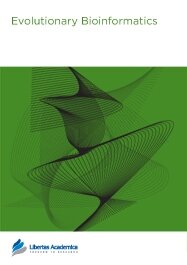

Publication Date: 24 Jan 2012
Type: Original Research
Journal: Evolutionary Bioinformatics
Citation: Evolutionary Bioinformatics 2012:8 127-137
doi: 10.4137/EBO.S9008

The abrupt appearance of primates and hystricognath rodents in early Oligocene deposits of South America has puzzled mastozoologists for decades. Based on the geoclimatic changes that occurred during the Eocene/Oligocene transition period that may have favoured their dispersal, researchers have proposed the hypothesis that these groups arrived in synchrony. Nevertheless, the hypothesis of synchronous origins of platyrrhine and caviomorph in South America has not been explicitly evaluated. Our aim in this work was to apply a formal test for synchronous divergence times to the Platyrrhini and Caviomorpha splits. We have examined a previous work on platyrrhine and hystricognath origins, applied the test to a case where synchrony is known to occur and conducted simulations to show that it is possible to formally test the age of synchronous nodes. We show that the absolute ages of Platyrrhini/Catarrhini and Caviomorpha/Phiomorpha splits depend on data partitioning and that the test applied consistently detected synchronous events when they were known to have happened. The hypothesis that the arrival of primates and hystricognaths to the New World consisted of a unique event cannot e rejected.
PDF (2.30 MB PDF FORMAT)
RIS citation (ENDNOTE, REFERENCE MANAGER, PROCITE, REFWORKS)
BibTex citation (BIBDESK, LATEX)
XML
PMC HTML
My co-authors and I had a very positive experience with the review and publication process in Evolutionary Bioinformatics. The reviewers were rapid and on point, and publication was also rapid after we made the necessary revisions.

All authors are surveyed after their articles are published. Authors are asked to rate their experience in a variety of areas, and their responses help us to monitor our performance. Presented here are their responses in some key areas. No 'poor' or 'very poor' responses were received; these are represented in the 'other' category.See Our Results
Copyright © 2013 Libertas Academica Ltd (except open access articles and accompanying metadata and supplementary files.)
Facebook Google+ Twitter
Pinterest Tumblr YouTube